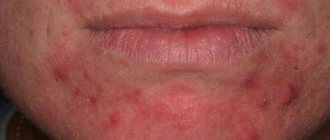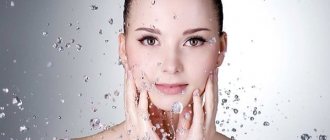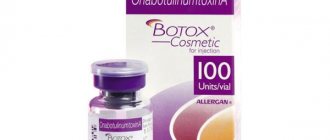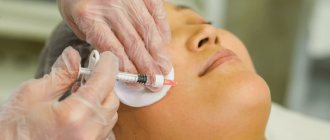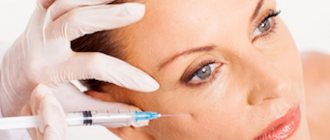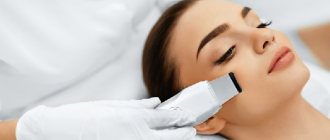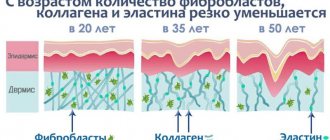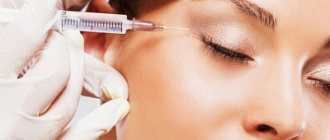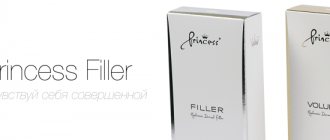Mesotherapy and biorevitalization. Both injection procedures, with a similar technique for administering drugs, are aimed at deeply moisturizing the skin and saturating it with nutrients. No wonder they are confused. The main difference between the methods lies in the composition of the pharmacological drugs. Knowing how they affect the skin, it is much easier to make a choice and understand why a cosmetologist recommends this or that type of injection technique.
Deep skin hydration techniques
Mesotherapy
Mesotherapy is a method of introducing active cocktails into the deep layers of the dermis in order to improve the quality of the skin, its appearance, tone and turgor, as well as to solve certain cosmetic problems.
Mesotherapy procedures are aimed at delivering vitamins, minerals, amino acids or other beneficial substances to the dermis. The depth of drug administration reaches three millimeters. The mixture of substances used is called therapeutic cocktails or serums. The composition of the mix is determined by the cosmetologist based on the current condition of the patients’ skin and the therapeutic purposes of the injections.
Mesotherapy has long been used not only to rejuvenate the skin, but also to eliminate acne, rosacea, pigmentation, rosacea, and dark circles under the eyes. When combating skin defects on the body, drugs are used that break down fatty deposits and improve blood circulation. Getting rid of local capillary dilations involves introducing strengthening complexes into the patient’s dermis, which will strengthen the walls of small vessels.
The technique of performing classical mesotherapy depends on the composition of the serum and the goal being pursued. Automation of the process is achieved through the use of mesoscooters and mesoinjectors. The main requirement for the equipment is sterility and the ability to accurately dose the amount of serum administered to patients.
Non-injection types of procedures are represented by laser, ultrasound and gas-liquid mesotherapy.
What are the advantages of biorevitalization and mesotherapy procedures?
The main advantages of biorevitalization are:
- Effective work with visible age-related changes. The procedure is rarely prescribed before age 35. And after this age, the reserves of natural hyaluron in the skin are depleted, and biorevitalization helps to replenish them.
- Duration of the result. The effect of biorevitalization lasts for several years.
- Deep hydration at the cellular level. Biorevitalization delivers a sufficient amount of moisture to the dermis to restore regenerative processes and stimulate the production of new cells.
- Minimal likelihood of side effects and allergic reactions. This is due to the fact that hyaluronic acid is a natural component of our skin tissue.
Mesotherapy, in turn, has a number of other advantages:
- Effectively eliminate skin problems. The procedure is necessary for girls with serious rashes, the first manifestations of age-related changes.
- Quick results. The effect of mesotherapy becomes noticeable just a few days after the procedure and lasts from 6 to 12 months.
- Proven effect in the fight against cellulite. A properly selected meso-cocktail can cope with the hated “orange peel”.
- Effective in the fight against scars, stretch marks, hyperpigmentation, hair loss. Mesotherapy has a wide range of indications and can cope with various skin problems.
Biorevitalization
Biorevitalization was initially just a special case of mesotherapy. The procedure for performing the procedures was the same - the only differences were in the composition, or rather in the main active ingredient. Initially, biorevitalization was a procedure for “revival” or literally “natural restoration of life” of the skin by replenishing the balance of hyaluronic acid (hyaluronate, hyaluron).
The introduction of hyaluronic acid as the main component into the deep layers of the skin using the mesotherapy technique received the separate name BIOREVITALIZATION.
But technology did not stand still and soon biorevitalization, due to its high-tech and efficiency, grew into a separate independent direction. Today, biorevitalization is one of the most popular and sought-after procedures in cosmetology. Biorevitalizants have long contained not just hyaluronic acid, but rich complexes of highly effective ingredients, such as peptides, amino acids, vitamins, antioxidants, etc. Moreover, now the components of such a cocktail do not need to be “assembled” manually from separate ampoules, but they are all safely sealed and balanced in one sterile syringe. Biorevitalization procedures provide deep hydration of the skin, stimulate the production of collagen and elastin, restore the intercellular matrix, provide an unsurpassed anti-age effect, permanently erasing the signs of premature aging from the face.
Indications for the procedure are:
- Withering of the skin;
- Violation of the water balance of the skin, age-related decrease in the production of natural hyaluronic acid;
- Formation of fine wrinkles;
- Photoaging of facial skin;
- Gray complexion;
- Dry skin after aggressive laser procedures.
The therapeutic effect is achieved over several procedures. The duration of the course is determined by the doctor, taking into account the individual parameters of each patient.
Indications and contraindications for mesotherapy or biorevitalization
The general goals pursued by both procedures are similar: restoration of firmness, elasticity and visual attractiveness of the skin in problem areas. At the same time, there are also characteristic differences that can help determine the choice of the appropriate option: for example, biorevitalization is useful for dry skin, age-related changes, wrinkles, mechanical defects and problems with increased sweating; Mesotherapy also helps with the manifestations of aging of the skin, helps to naturally improve complexion, and helps eliminate traces of scars and acne.
The list of contraindications is similarly similar. Obstacles to the procedures will be: exacerbation of chronic diseases; the presence of cancer (primarily skin diseases), as well as cholelithiasis; allergy; inflammatory and infectious processes in the body; diabetes; violation of the blood clotting process; skin sensitivity to ultraviolet radiation; pregnancy. Individual intolerance to the selected drugs is also possible.
Be careful! A reaction to hyaluronic acid in case of individual intolerance can even result in tissue death! Be sure to undergo a preliminary examination to identify allergic reactions to hyaluronic acid!
Another limitation, but for mesotherapy, is permanent makeup - in this case, a separate selection of cocktail components is carried out.
The list of side effects is small and is associated not so much with the drugs used, but with the body’s reaction to the intervention. Possible negative effects: moderate pain, the appearance of small bruises or hematomas, as well as swelling at the injection site. Complications are excluded when the procedure is performed by a qualified doctor in a specialized clinic. To avoid the occurrence of severe inflammatory processes, infection in the body, bleeding and serious cosmetic defects, do not be seduced by prices and dubious advertising of little-known clinics!
Distinctive features of mesotherapy and biorevitalization
Since biorevitalization is a special case of mesotherapy, then asking the question “What is better, biorevitalization or mesotherapy?” not entirely correct. It's like comparing “butter” and “butter.”
The main difference between biorevitalization is that the preparations used contain high concentrations of hyaluronic acid. Hyaluronic acid can be the only component in the preparation, or one of the elements of a richer composition. Today, many biorevitalizants contain, in addition to hyaluronic acid and amino acids, peptides, vitamins, and whitening elements. Preparations for biorevitalization are created in special scientific laboratories and are distinguished by their rich composition, high degree of purification, hypoallergenicity and safety.
The main purpose of the biorevitalization procedure is to replenish the lack of hyaluronic acid, deeply moisturize, nourish, restore the skin and prolong its beauty and youth. Biorevitalization is used by cosmetologists mainly for aesthetic correction of the skin on the face, neck, décolleté and hands.
“Mesotherapy” is a broader concept and includes all therapeutic cocktails injected into the skin to solve a wide variety of problems. This includes the treatment of cellulite, the reduction of local fat deposits, the correction of a wide variety of skin defects, the nutrition of hair follicles and much more. Mesotherapy, in addition to the face, neck, décolleté, hands, is actively used to treat any area of the body: back, abdomen, hips, buttocks, arms and legs, as well as the scalp.
Biorevitalization procedures launch the processes of revitalization, rejuvenation and moisturizing of the skin by replenishing the deficiency of natural hyaluronic acid; meso-cocktails have a wider spectrum of action and, in addition to the aesthetic effect, are often used to correct various skin pathologies - acne, rosacea, pigmentation, and are also actively used to eliminate cellulite , local fat deposits, stimulation of hair growth during baldness.
We present to your attention a small comparative table to make it easier for you to understand how biorevitalization differs from mesotherapy:
Differences between biorevitalization and mesotherapy:
| Biorevitalization | Mesotherapy | |
| Compound | The main active ingredient is high molecular weight hyaluronic acid + a wide variety of components: amino acids, vitamins, nucleic acids, peptides, etc. | The composition of therapeutic cocktails is formed depending on the problem being solved. |
| Correction zones | Face, neck, décolleté, hands | Any areas of the face and body, as well as the scalp |
| Indications | Loss of hyaluronic acid volume in the dermis, and as a consequence loss of elasticity, firmness of the skin, worsening signs of skin aging Additional indications depending on the drug:
|
|
| Package | Immediately ready composition. The treatment cocktail is placed in one syringe. | The therapeutic cocktail can be placed in one syringe, or the doctor can independently form a cocktail from different bottles. |
| Treatment frequency | Course 3-5 procedures | Course 6-10 procedures |
Advantages, differences, disadvantages and contraindications
Both treatment methods are medical procedures, which means they have contraindications. Their list is not so long, and one of the main ones is individual intolerance to the drugs used. In order to make sure that there are no obstacles to a mesotherapy or biorevitalization session, it is imperative to undergo a preliminary examination by a specialist. Both procedures belong to the moderate price segment; however, biorevitalization sessions are more expensive due to the cost of the drug used (which is commercially available). It is also important to consider that plastic surgery should always be performed by first-class specialists with extensive experience. Otherwise, there is a risk of complications and defects, which are disproportionately more difficult to correct. Please note that minor bruises or swelling that occur after injections are not a complication - this is a natural reaction of the body, and the marks will completely disappear within a few days.
Mesotherapy
— liquid injection - a large number of injections (up to 500);
— the needle is inserted 2 millimeters;
— gradual impact (visible effect after a few days);
- at least 5 sessions.
Highly professional mesotherapy in Moscow - cosmetology center at Seline Clinic.
Biorevitalization
- injection of the drug in gel form - the number of injections and injection points are strictly defined;
— the needle is inserted no more than 1 millimeter;
— instant action (the result can be noticeable already on the second day);
— the number of sessions varies from 1-2 to 5.
Efficiency of procedures
The procedures have a cumulative effect, so the results become noticeable as you progress through the course. Each new procedure improves the condition of the skin. By the end of the course, the skin acquires a natural glow, becomes firm and elastic.
The required number of procedures is always determined by the doctor during the initial examination after collecting anamnesis and tests, if necessary. The interval between procedures again depends on the individual characteristics of the skin.
The achieved effect usually lasts for the next 6-12 months. After this period, the epithelium and dermis begin to lose the introduced components, so to maintain the previously achieved effect, preventive procedures are necessary, the number of which depends on the individual characteristics of the organism.
There is a relationship between the client’s age and the effectiveness of the procedures:
- Patients under 30 years of age note the high effectiveness of biorevitalization, which prevents skin aging and the appearance of age-related changes. At this age, we are talking more about preventive therapy. At this age, biorevitalizants may contain pure hyaluronic acid; it alone is enough to maintain the beauty and youth of the skin. Mesotherapy at this age is more often prescribed according to indications (in the presence of skin defects) or in figure correction programs.
- In the period from 30 to 40 years, the compositions of biorevitalizants can become more saturated in order to compensate for the lack of not only hyaluronic acid, but also the deficiency of minerals and vitamins.
- Patients over 40 years of age are recommended to use drugs that contain not only hyaluronic acid, but also anti-age and protective components: amino acids, coenzymes, antioxidants, peptides, nucleic acids, vitamins, etc. Mesotherapy procedures are also increasingly being prescribed to whiten age spots, correct vascular pathologies, and refine the contours of the face and body. A course of injection procedures significantly improves the visual image of men and women.
Until the age of 30, some procedures are effective; after 40, they may no longer have such a pronounced effect. In any case, everything is purely individual and the cosmetologist makes the appointment based on the needs and characteristics of each specific client.
Undergoing biorevitalization or mesotherapy should not be accompanied by abandonment of traditional skin care procedures. They help prolong the effect of the cocktail components and keep the skin in optimal condition. Girls are recommended to use nourishing creams, masks and moisturizing serums. Quitting smoking and drinking alcohol, following a diet and mineral and vitamin balance in the diet will be the key to long-term preservation of the results achieved by injections.
Age characteristics
Mesotherapy is a more flexible procedure, so even those who have recently turned 20-25 years old should undergo it. It will provide young skin with nutrition, vitamins and other beneficial substances. Thanks to this, your face will remain beautiful longer and the aging process will slow down. At a later age, mesotherapy is useful as one of the types of antiage care.
Biorevitalization with hyaluronic acid is indicated for patients over 30 years of age, because Usually, it is at this age that the amount of water in the cells decreases significantly, and the synthesis of collagen and elastin gradually slows down.
Contraindications and side effects
Doctors consider mesotherapy and biorevitalization to be safe methods of skin rejuvenation. But patients should strictly follow all recommendations of cosmetologists to avoid the development of complications.
Contraindications for the procedures are:
- Pregnancy and lactation;
- Allergy to individual components of the serum;
- Tendency to form keloid scars;
- Psoriasis and any skin inflammation;
- ARVI;
- Bacterial, viral or fungal infections.
Before performing any manipulations, doctors talk about existing contraindications and conduct a survey of the patient. You should not hide important information from the cosmetologist that may reduce the effectiveness of the procedure or lead to the development of complications.
Biorevitalization of the face - the mechanism of action of the procedure
The long-term revitalizing effect of biorevitalization preparations is due to their high content of unstabilized hyaluronic acid (more than 35 times higher than the content of natural hyaluronic acid in the patient’s own skin). Hyaluronic acid molecules introduced into the skin begin to slowly break down into smaller structural units, the so-called proteoglycans and glycosaminoglycans, and then into mono- and disaccharides, which are a kind of “natural building material” for the synthesis of our own hyaluronic acid. As the main structural component of the intercellular matrix of the dermis, hyaluronic acid is responsible for skin hydration, since one hyaluronic acid molecule can hold up to a thousand water molecules.
With age, the amount of our skin's own hyaluronic acid decreases and its hydration deteriorates, which leads to a slowdown in biochemical processes and a decrease in the rate of division of cellular elements of the basal layer of the skin. This mechanism underlies one of the causes of skin aging. Thanks to biorevitalization, today it is possible to slow down the aging process, since as a result of the procedure, the balance of the skin’s own hyaluronic acid is restored. The result is that the water balance is normalized, and the cells receive ideal conditions for life.
Biorevitalization or mesotherapy? What are the differences
Biorevitalization and mesotherapy are aimed at improving the appearance of the skin. The components are introduced by injection, so they immediately reach the goal.
However, mesotherapy, thanks to a cocktail of components, provides more opportunities to solve specific problems (angina, pigmentation, rosacea). Its effect is visible almost immediately. Course sessions are required for maintenance. Biorevitalization is more aimed at moisturizing the skin.
A cosmetologist at the SkinLazerMed medical center will help you choose the appropriate procedure option. Consultation with a doctor is necessary. We offer it free of charge on the day of the procedure. We provide cosmetology services at the best prices in St. Petersburg.
